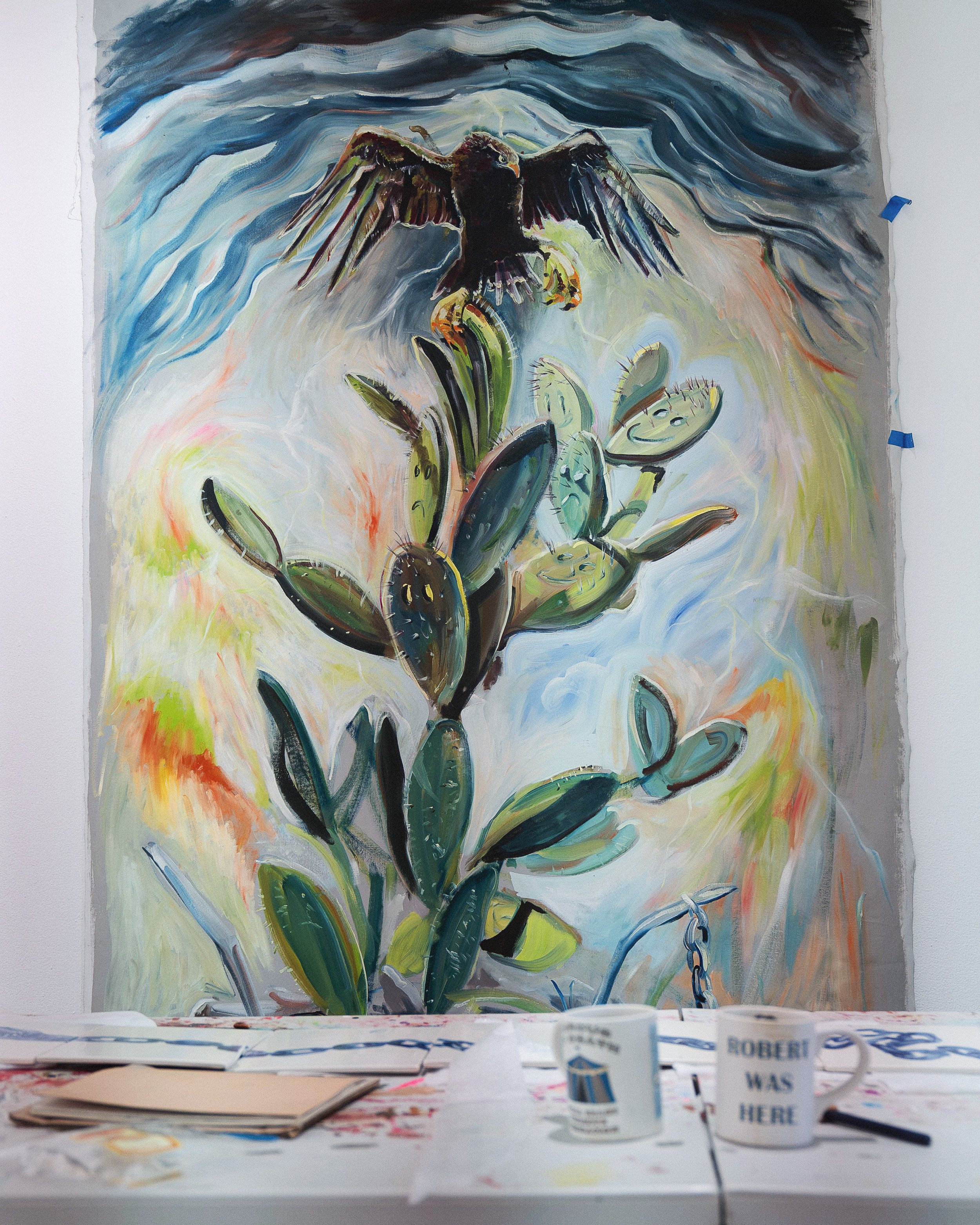February - March 2025
Marcos Castro
Film directed by Maria de Victoria for Fountainhead Arts
When Marcos Castro arrived in Miami, the ibises—often seen strolling through the city’s bustling streets and parks, landing atop cars stalled in traffic—became his muse. In the early mornings of Miami, as the sun climbs over the horizon, the city’s skies are filled with the graceful flutters of ibises. Their long, slender necks curve with ease, and their bright white feathers almost seem to glow in the light. Their elegance and almost comic persistence weaved their way into his mind.
At the heart of Castro’s practice lies an inherent connection to space, a bond that transcends the canvas. His works often expand beyond traditional boundaries, challenging the limitations of painting by transforming the environment itself. The walls, floors, and ceilings of the gallery become part of the artwork. His work does not merely inhabit a gallery—it swallows it whole, digests its architecture, and reimagines it as an extension of his own myth-making. In Mexico City, where the ghosts of muralists loom large, Castro paints with a reverence that both honors and fractures tradition, extending beyond the confines of canvas, into the skin of the walls, into the bones of the building itself.
This idea of fluidity—of painting coming alive through interaction—echoes the legacy of Mexican muralism, a movement he holds dear. Figures like José Clemente Orozco and David Siqueiros inspire him, as they once did for an entire nation grappling with identity, history, and revolution.
But rather than illustrating the past, Castro fractures it, layering symbols of decay and renewal—bones, birds, fragmented landscapes—into compositions that blur the lines between the ancient and the apocalyptic. His signature use of surrealist, dark, saturated tones and textured surfaces imbues his work with a haunting quality, a sense that something is shifting beneath the surface.
The vision starts in his sketchbook, a private space where surreal fantasies take root. It’s here that Castro's thoughts begin to take shape: tiny drawings and scribbled ideas swirl into a cohesive narrative. The sketchbook serves as his playground, where he envisions how these playful, heart-eyed ibises might leap off the page and into the world—how they might, in their final form, become living, breathing installations, as they adorn the walls of his Fountainhead studio.
His art is born not in isolation, but in communion. Castro found his first artistic home in the vast expanse of an abandoned house and he has carried this ethos with him, understanding that to create is to connect, to gather, to build a sanctuary in the face of an art world that can be unrelenting.
In Miami, he sees nature pressing in from all sides, an unfamiliar yet intoxicating force. Birds he cannot name (the ibis) stare back at him, their presence a quiet demand: Look. Notice. Translate. His sketchbooks fill with new creatures, new landscapes—his lines attempting to capture the feeling of a city that shapeshifts overnight. Here, he is an outsider with fresh eyes, attuned to details that long-time residents may no longer see. The sea breeze, the weight of humidity, the quiet struggle of a space trying to hold onto its past as it is rewritten by wealth, by movement, by the inevitability of change—these forces seep into his work, into the murals that grow beyond themselves, into the paintings that refuse to be contained.
In his world, the painting does not end at its edges. It continues. It consumes. It breathes.
Words by Alexandra Martinez







